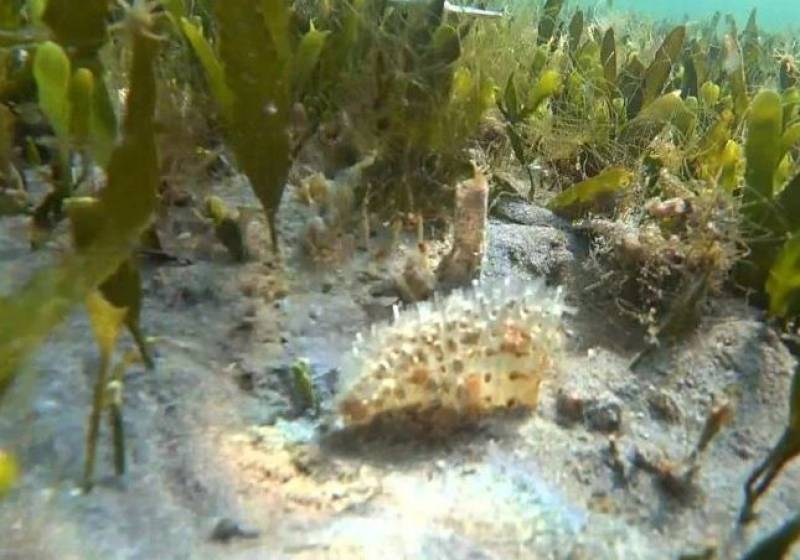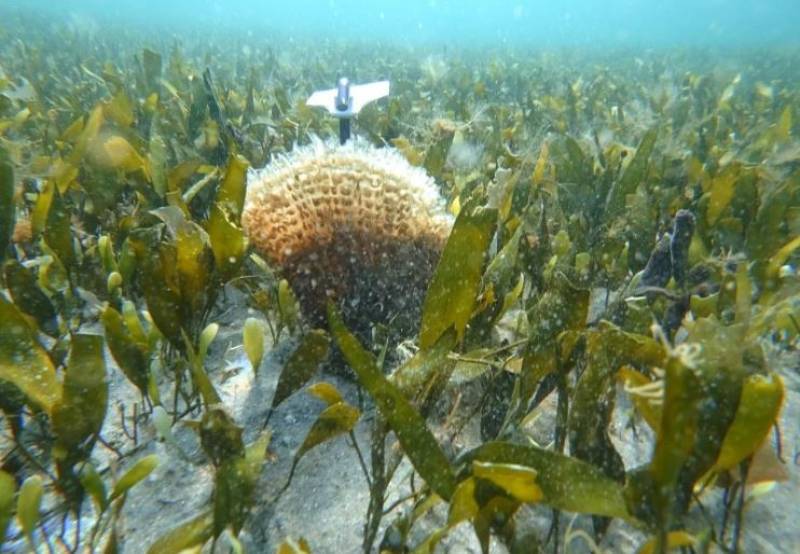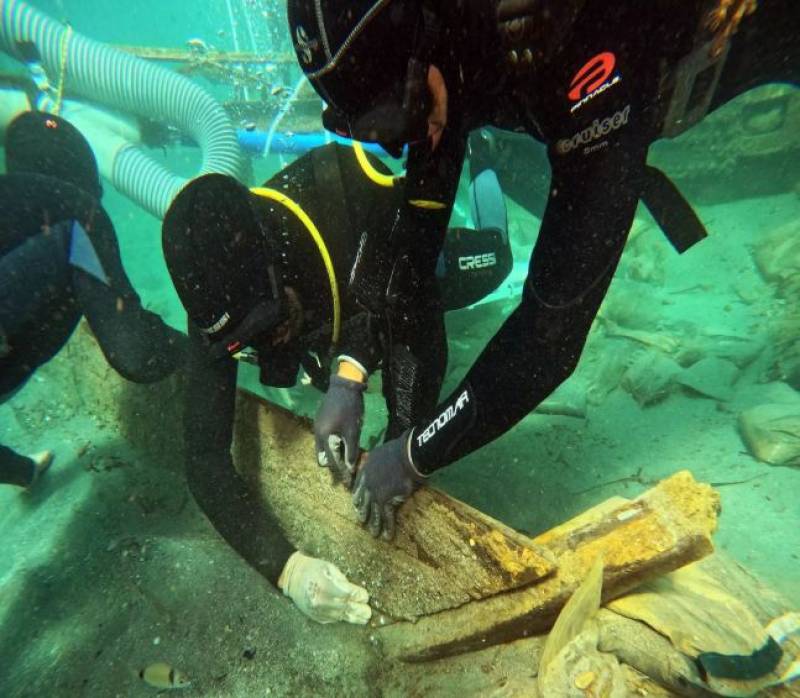Date Published: 21/05/2025
Giant mussels return from brink of extinction in Mar Menor
ARCHIVED ARTICLE -
The endangered molluscs have once again started breeding in the lagoon
A glimmer of life is returning to the long-suffering waters of the
Mar Menor. In a discovery that has surprised marine biologists and conservationists alike, 63 juvenile giant mussels (Pinna nobilis),
one of the Mediterranean’s most endangered species, have been found colonising the deeper zones of the lagoon, some more than five metres below the surface.
This unexpected resurgence comes in one of the most ecologically battered parts of the Mar Menor, an area that has seen marine life all but vanish after a string of environmental disasters since 2016.
Yet between February and March this year, experts involved in a dedicated monitoring programme stumbled upon clusters of young giant mussels, offering
a rare sign of ecological revival.
“The existence of viable reproductive events in deep areas had not been observed since before 2016. The discovery of these new juvenile Pinna nobilis specimens in early 2025 adds to the 23 found last year in shallow areas, thus reinforcing the positive trend in the presence of this species, which has been observed since last year," say sources from the Ministry of the Environment.

However, this year’s deeper-dwelling mussels appear to signal something more enduring: a hopeful upward trend in population recovery.
All 63 mussels have now been precisely geolocated, allowing researchers to track their growth and survival closely. Six of the juveniles have even been moved to the aquarium at the University of Murcia (UMU), where scientists are attempting to breed the critically endangered species in controlled conditions - a process known as ex situ reproduction.
"With the expectation of continuing to find specimens, the monitoring team continues to conduct exhaustive sampling of the lagoon floor at this time of year when the densities of Caulerpa prolifera meadow are lower and visibility is greater," the research team added.
Dr. Francisca Giménez Casalduero, professor of zoology at the University of Alicante and a key figure in the mussel monitoring effort, said that while some reproductive activity had been recorded in recent years, they had not seen recruitment - that is, the successful settling and growth of young mussels on the seafloor.
“That’s likely due to poor water quality and high bacterial loads that attacked the mussels before they could mature,” she explained.
Now, with these juveniles anchoring themselves in once-lifeless terrain, researchers believe the ecosystem may be turning a corner.
“This gives us hope,” said Ms Giménez.
“There's a minimal chance that some of the juveniles won't survive, but if the larvae that were in the water column end up settling on the seafloor, the conditions for their development in that habitat could be optimal.”
Further explorations are planned for the months ahead as scientists keep searching the seafloor for more signs of a comeback.
Images: Carm
article_detail

|




 However, this year’s deeper-dwelling mussels appear to signal something more enduring: a hopeful upward trend in population recovery.
However, this year’s deeper-dwelling mussels appear to signal something more enduring: a hopeful upward trend in population recovery.































